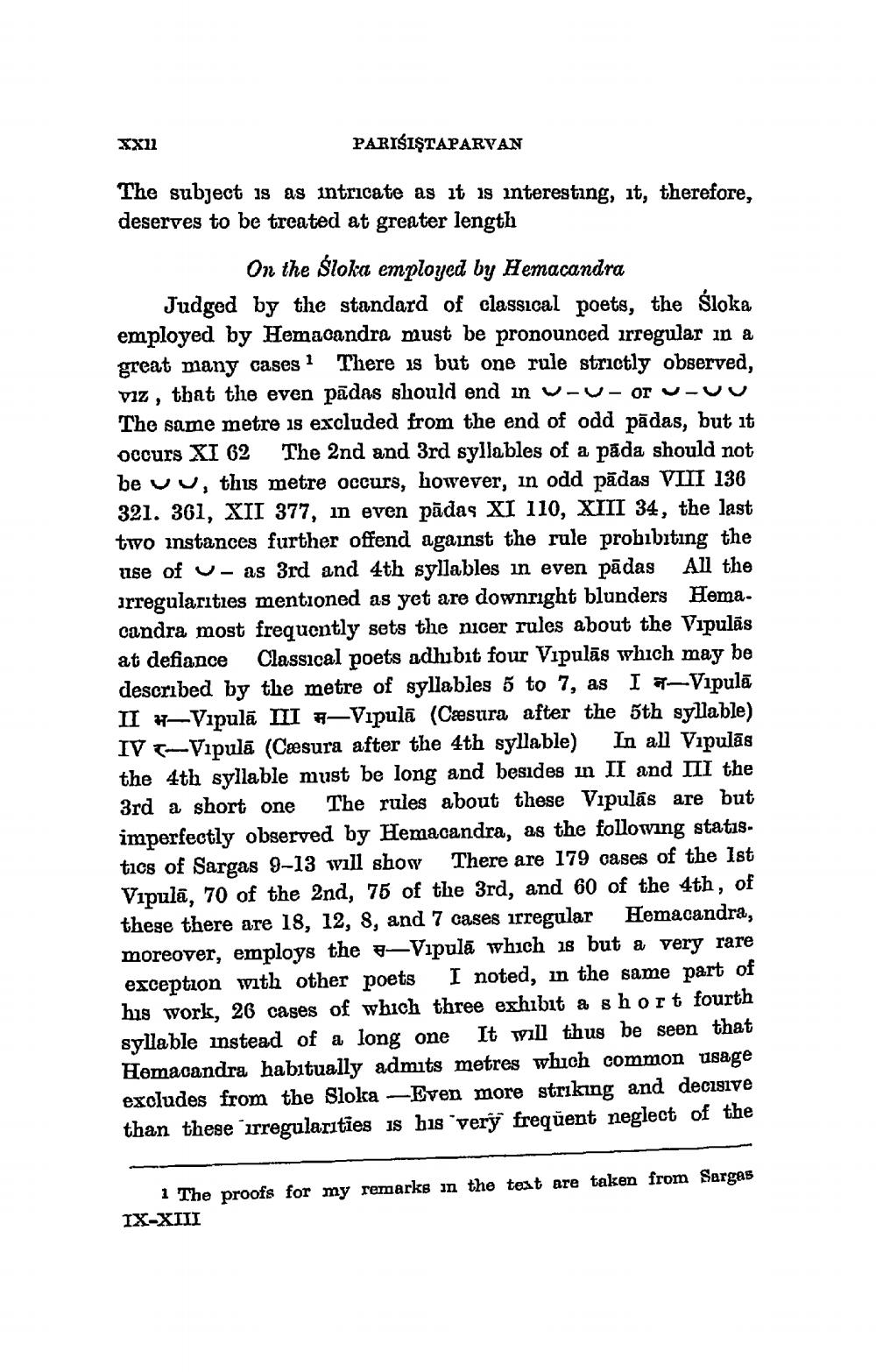________________
PARISISTAPARVAN
The subject is as intricate as it is interesting, it, therefore, deserves to be treated at greater length
XX11
On the Śloka employed by Hemacandra
Judged by the standard of classical poets, the Śloka employed by Hemacandra must be pronounced irregular in a great many cases There is but one rule strictly observed, viz, that the even pādas should end in -U-OF ~-uu The same metre is excluded from the end of odd padas, but it occurs XI 62 The 2nd and 3rd syllables of a pada should not be vu this metre occurs, however, in odd padas VIII 136 321. 361, XII 377, in even padas XI 110, XIII 34, the last two instances further offend against the rule prohibiting the use of as 3rd and 4th syllables in even pādas All the irregularities mentioned as yet are downright blunders Hemacandra most frequently sets the nicer rules about the Vipulas at defiance Classical poets adhibit four Vipulas which may be described by the metre of syllables 5 to 7, as I -Vipulā II -Vipula III -Vipula (Cesura after the 5th syllable) In all Vipulas IV-Vipula (Cesura after the 4th syllable) the 4th syllable must be long and besides in II and III the 3rd a short one The rules about these Vipulas are but imperfectly observed by Hemacandra, as the following statisThere are 179 cases of the 1st tics of Sargas 9-13 will show Vipula, 70 of the 2nd, 75 of the 3rd, and 60 of the 4th, of Hemacandra, these there are 18, 12, 8, and 7 cases irregular moreover, employs the -Vipula which 18 but a very rare exception with other poets I noted, in the same part of his work, 26 cases of which three exhibit a short fourth It will thus be seen that syllable instead of a long one Hemacandra habitually admits metres which common usage excludes from the Sloka -Even more striking and decisive than these irregularities is his very frequent neglect of the
1 The proofs for my remarks in the text are taken from Sargas IX-XIII




